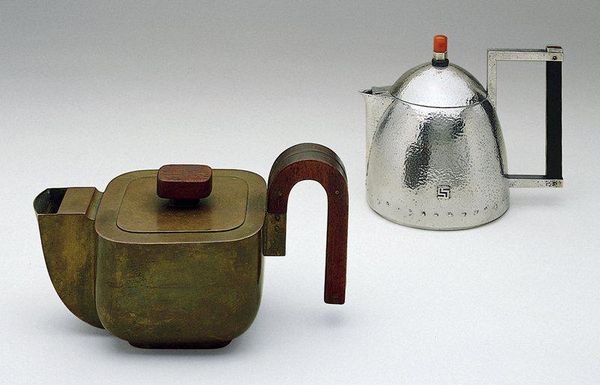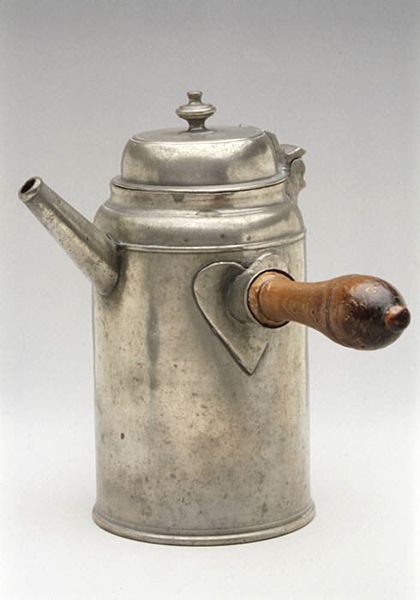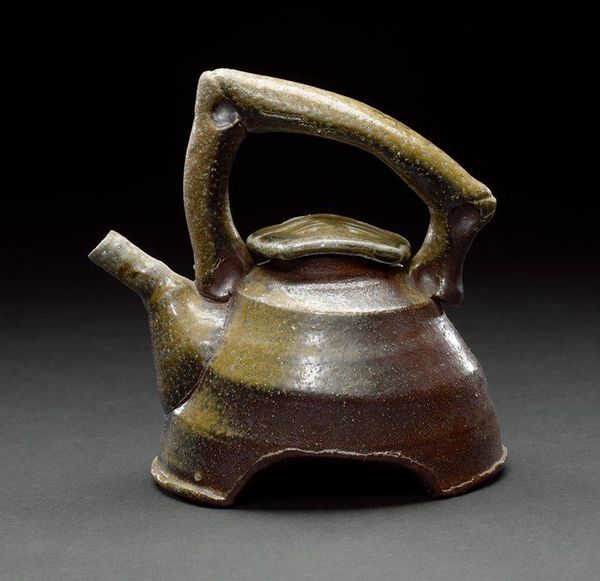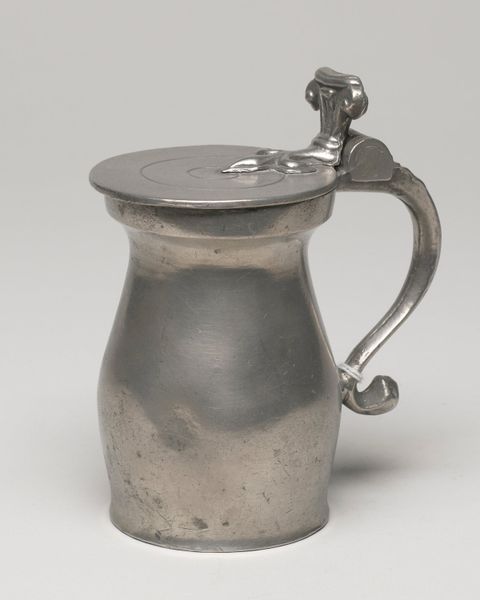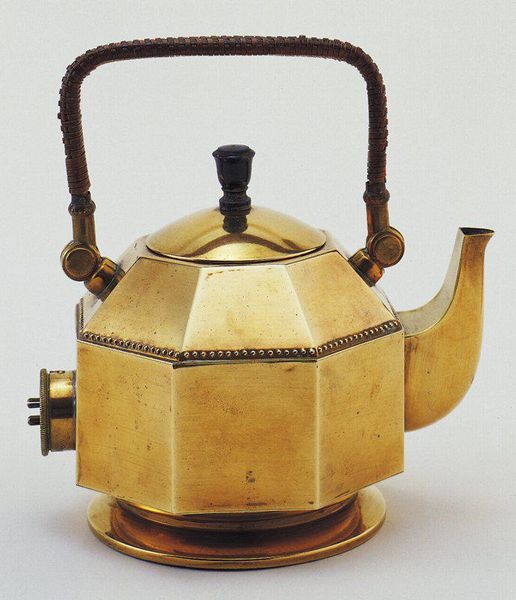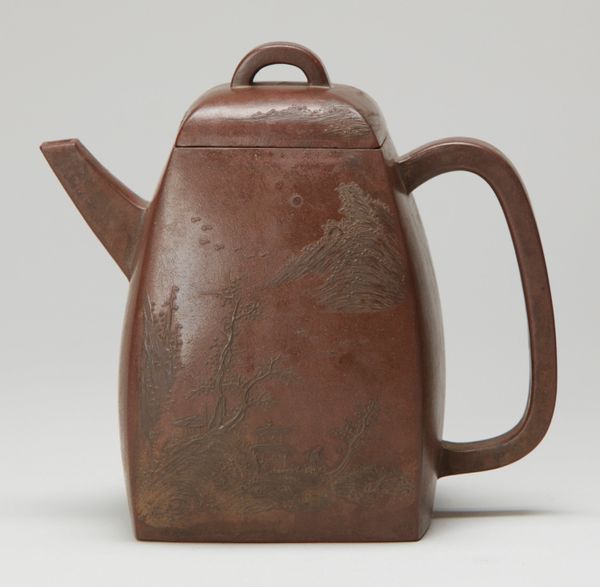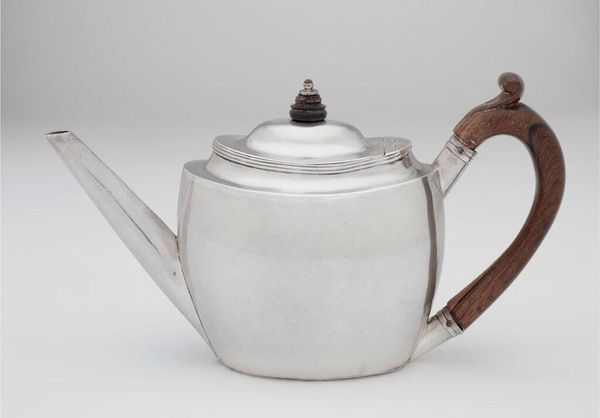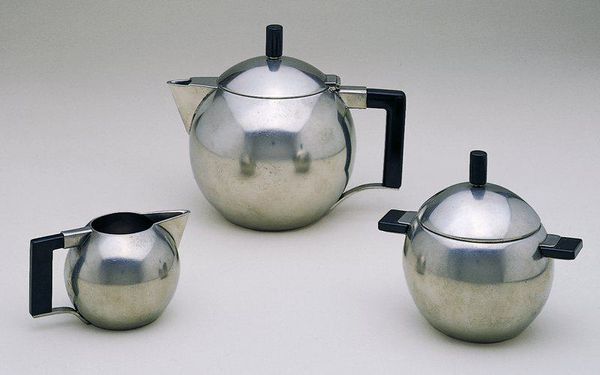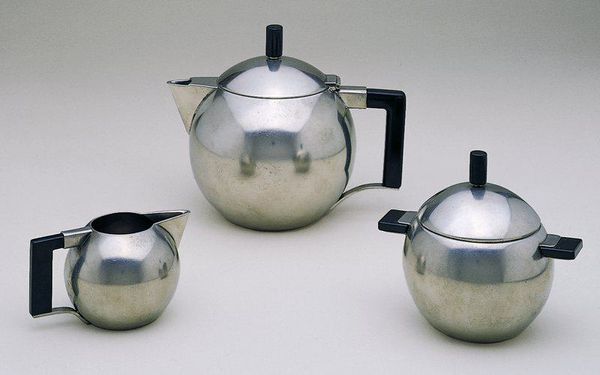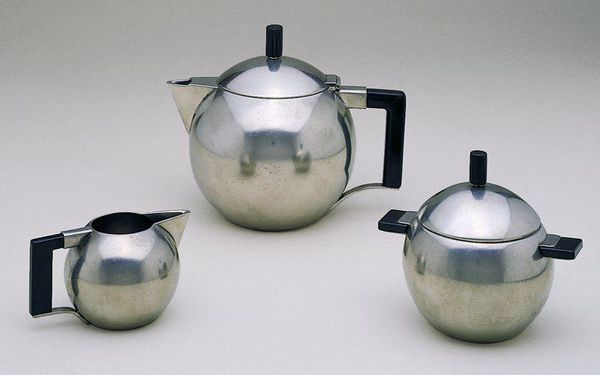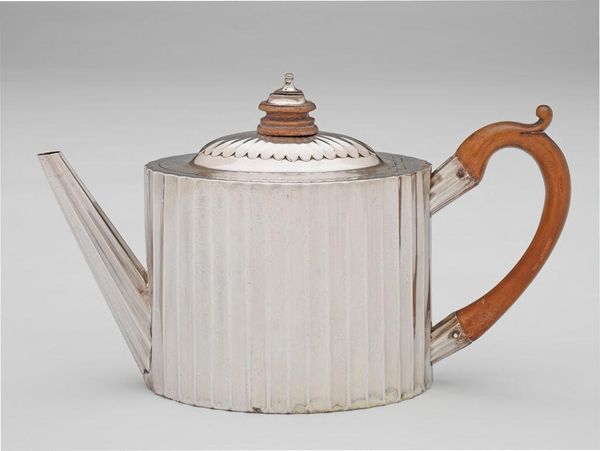
metal, wood
art-nouveau
metal
wood
decorative-art
Dimensions: 6 x 7 x 5 in. (15.24 x 17.78 x 12.7 cm)
Copyright: No Known Copyright
Curator: At the Minneapolis Institute of Art, we're fortunate to have Josef Hoffmann’s striking “Teapot” from 1903. It showcases the innovative spirit of the Art Nouveau movement through a fresh, geometric lens. Editor: It's strangely appealing! At first glance, it looks almost like a minimalist sculpture, something almost Mondrian-esque in its angular forms. Curator: The materiality is really what's key here. Hoffmann masterfully blends the coldness of metal with the warmth of wood, emphasizing their different textures. We must note, these were produced during a time of massive shifts in manufacturing capabilities and socioeconomic change in Europe. Editor: Indeed! And structurally, the contrast is just striking. We see the smooth dome and heavily hammered textures on the silver-toned piece that plays against the bronze patina finish and clean, sharp corners of the one on the left. Look how both handles offer a contrasting approach to shape too; each piece explores the interaction between straight lines and smooth curves. Curator: Exactly. Hoffman’s choice of wood for the handle, juxtaposed against the functional metallic body, signifies a return to handcrafted qualities even amidst mass industrialization. This reveals much about production methods and labor—challenging the notion of 'high' versus 'low' art by valuing artistic process over mere ornamentation. Editor: What does stand out, thinking aesthetically, is that square wooden handle of the left-hand teapot. And that slightly curved spout that projects. Those angles soften just enough. Curator: It's Hoffman pushing the envelope! While the visual components grab attention, let's also reflect on what a commonplace object reveals when given this degree of thought. It really redefines our notion of functionality versus aesthetic beauty, doesn't it? Editor: It truly does! These humble teapots invite one to slow down, engage the senses, and rethink even our mundane surroundings. I now perceive function through a far more sophisticated filter!
Comments
No comments
Be the first to comment and join the conversation on the ultimate creative platform.
